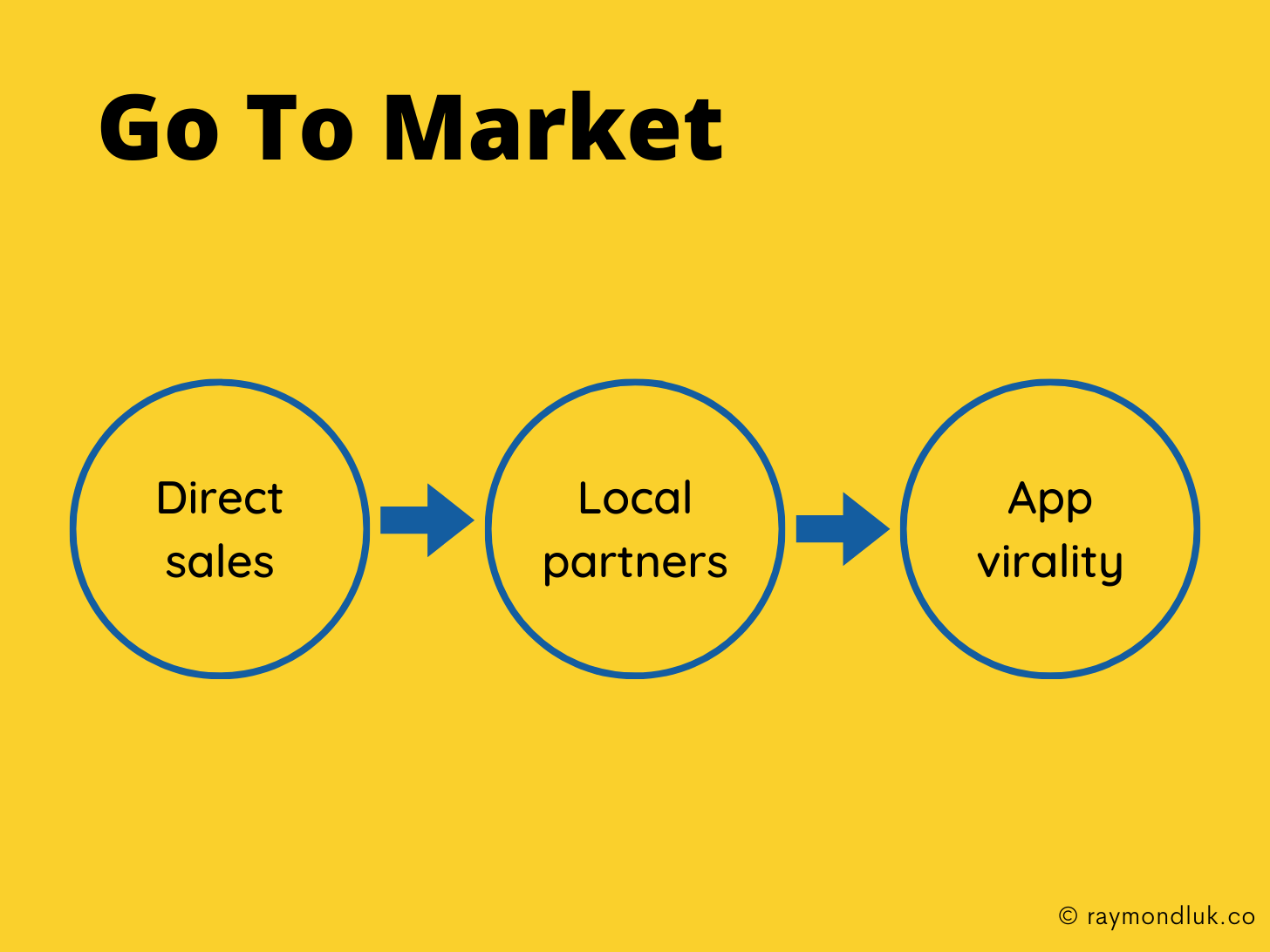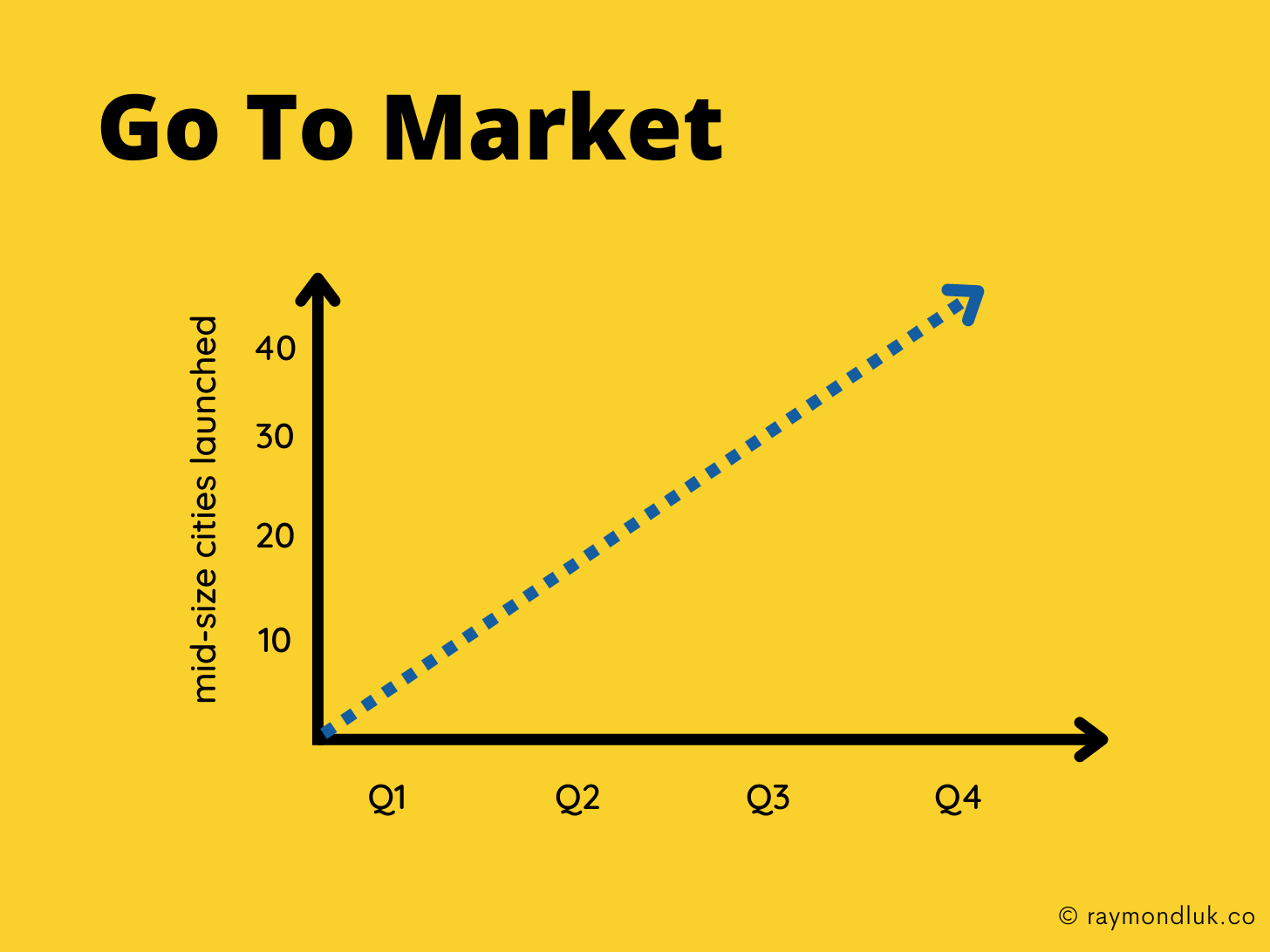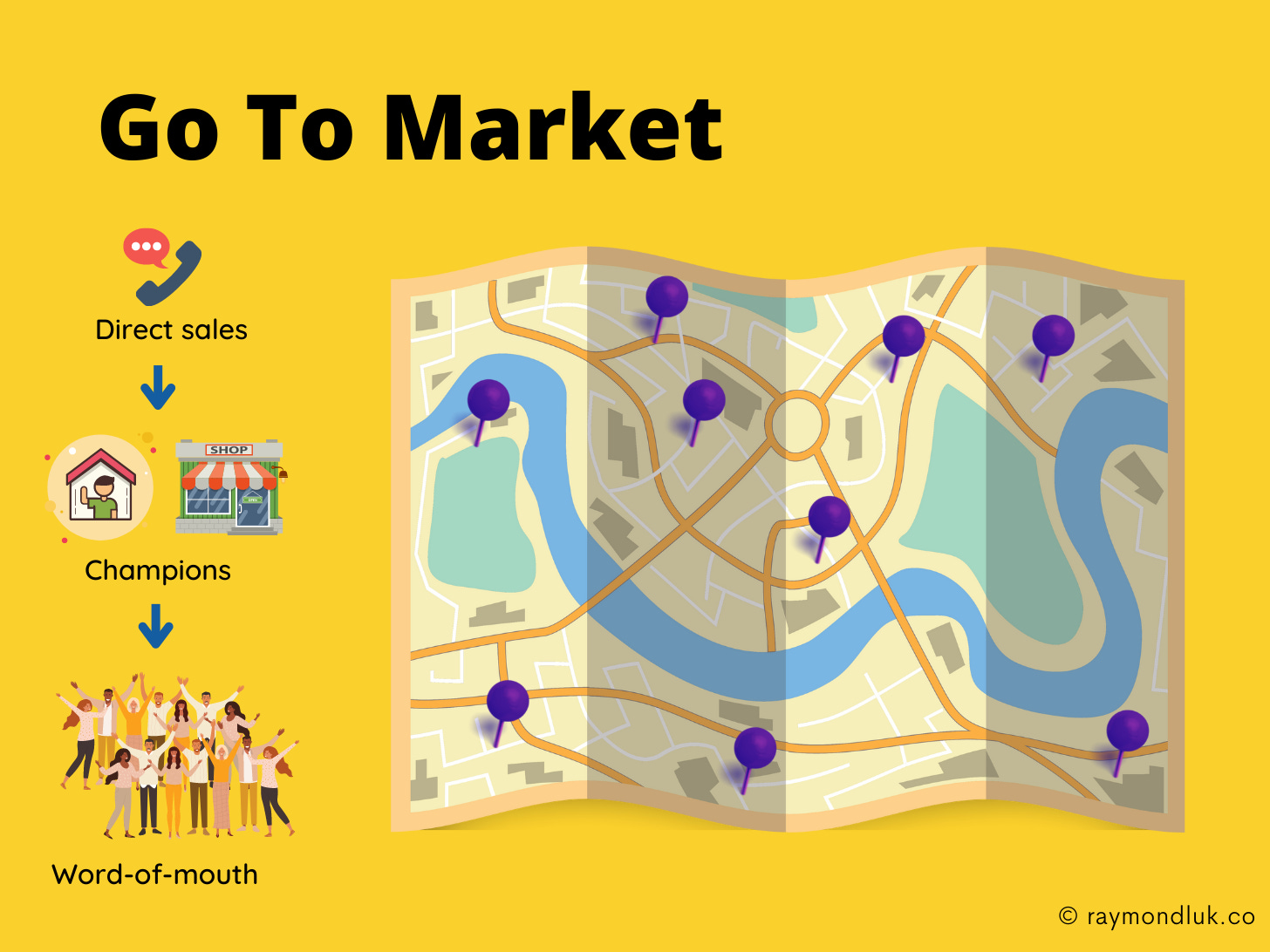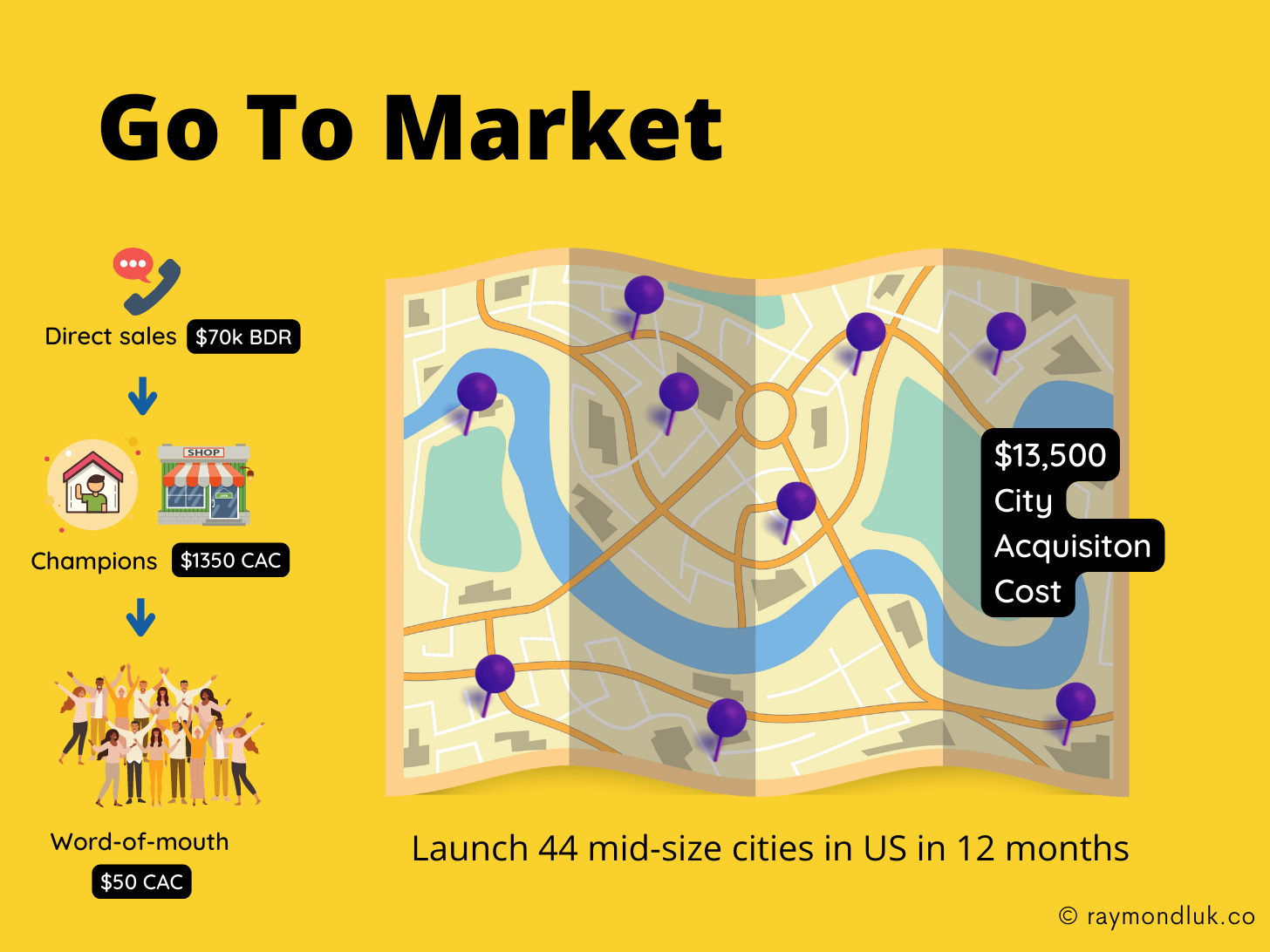This is a continuation of my self teardown of the Good Neighbors pitch deck. Last week I talked about the business model.
Subscribe to my newsletter for weekly posts about pitching and founder storytelling.
For my go to market slide I want to focus on building excitement around how I’m going to grow Good Neighbors.
Not many GTM slides do a good job building excitement. But this is super important. I need to show I’m just as excited about my growth strategies as I am about my product. Hopefully this is true in your case.
From the previous Business Model slide, my main three GTM strategies are:
- Direct selling to open up each neighborhood
- Partners, like local hardware stores, to distribute incentives
- Product features to encourage usage and vitality
Too Simple
I started by keeping things real simple. The idea is to tease my high-level GTM strategy on my slide, then fill in the details when I present.

The problem is I’m going to have to do so much explaining in person. I’m going to have to rely on whoever I pitched recalling enough to be able to explain it to another person, like another partner in the firm.
Too Boring
Since I have a specific growth plan based around geographical expansion (both within a city and expanding to other cities), I thought a chart would be ideal.

It might be accurate but I’m doing the opposite of building excitement. This looks like a project plan, not a plan for world domination.
Getting Excited
I decided to focus on two things on my GTM slide:
- Summarize the way I launch each neighbood.
- Show how I capture more neighborhoods in a city

I left out national expansion because there isn’t enough room on the slide. I’m making a choice that grassroots growth is more exciting than national growth. I’m a seed-stage startup after all so this makes sense.
The Final Slide

The GTM strategy for Good Neighbors is based on direct sales. As in humans calling or emailing homeowners directly to entice them to use our app. I’ve got data from Lenny Rachitsky that 60% of well-known marketplaces used this exact tactic.
I decided to add sales metrics to the slide. I’m assuming one business development rep (BDR) costs $70k/year and can find one neighborhood champion each week. My goal is to open up 10 neighborhoods per city before word of mouth kicks in. That translates to a $13,500 “city acquisition cost”. I would need a team of at least 8 BDRs to grow to 44 cities.
I’m still sticking to my $50 CAC which is an average of acquiring the champion (expensive) and acquiring the neighbors through word of mouth (very cheap).
Why This Works
With this final GTM slide I can picture myself having a really interesting in-depth conversation with a VC about how we’ve figured out (during our MVP) how all of this works. We “cracked the code” on launching and expanding neighborhoods. Growing nationally, or even globally, will be rinse and repeat.
That sounds exciting!



